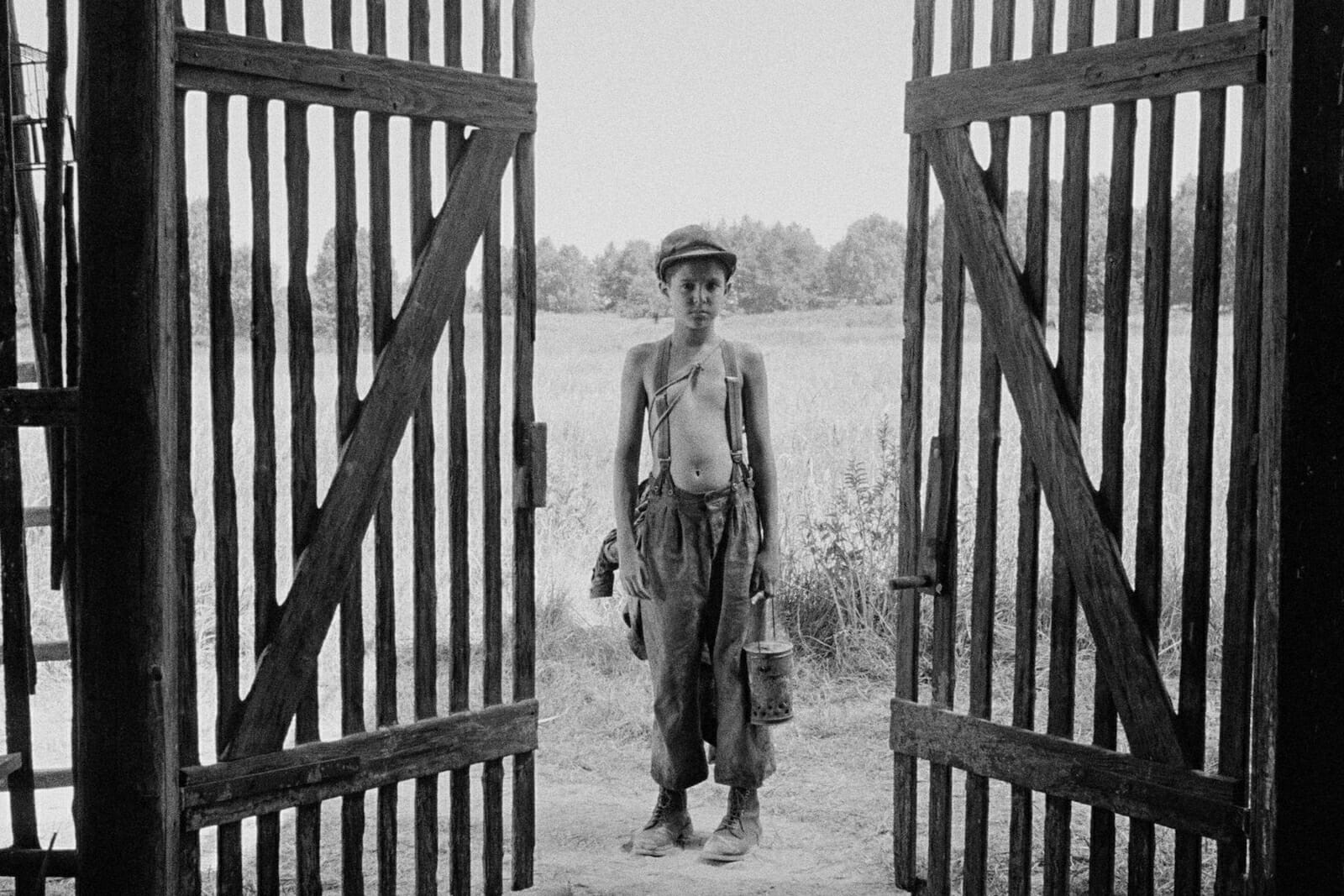
‘The Painted Bird’ Review
Polish-American writer Jerzy Kosiński’s 1965 novel The Painted Bird has one of the strangest and most controversial histories of any book. Initially celebrated as an extraordinary piece on the Holocaust era, the novel was banned in Poland, and author Kosiński was accused of falsifying claims of it being an autobiographical work. Later he was accused of plagiarism for this book and his 1970 book Being There (adapted into a 1979 movie starring Peter Sellers). This story of a young Jewish boy, abandoned by his parents and traveling the Eastern Europe countryside during WWII, is now accepted as a blend of fiction, as well as his friend Roman Polanski’s experiences. Czech filmmaker Václav Marhoul has turned the book into a stunning viewing experience.
First-time actor Petr Kotlár is extraordinary as the unnamed (until the end) Jewish boy on a journey that might be entitled Dante’s Circle of Abuse or Homer’s Odyssey of Misery. This is a young boy in need of kindness from strangers, but unable to find much. The film opens with the boy running through the woods carrying what appears to be his pet ferret. He’s being chased by a group of sadistic anti-Semite bullies. It’s a chase that doesn’t end well. We learn the boy is living with his “Auntie” Marta (Nina Šunevič) on her rundown farm, and we intuit that his parents thought he would be safer here than with them. When the woman dies suddenly and unexpectedly, the boy accidentally burns the house down, kicking off his walk across the countryside. Almost inexplicably, this is the most upbeat segment of the film.
Director Marhoul divides the film into 9 chapters, each named after the person the boy meets and lives with temporarily. It’s a nearly 3-hour epic of human cruelty and survival instinct. Young Petr Kotlár spends much of the movie taking and witnessing abuse while his face is near-emotionless (save for a couple of extremes). Joy is elusive, if not non-existent. The film shows us that not all of the Holocaust horrors occurred in death camps. The atrocities of war and the cruelty of humans result in a film that is beyond bleak at times, but also makes a clear point about how differently people treat those not “like” us, regardless of who the “us” is. This point is as evident today as it was during WWII.
Director Marhoul excels in showing, rather than telling…there is almost no ‘telling’ throughout the film. Cinematographer Vladimír Smutný makes expert use of the 35mm black-&-white film to provide images that are stark and brutal like the world the boy sees. The Production Design from Jan Vlasák puts us right in the muck, while the Sound from Jakub Cech is crucial to every scene.
The film is a joint project of the Czech Republic, Slovakia, and Ukraine, as Poland refused to participate. It had quite the festival run last year, including some high profile walk-outs during the Venice Film Festival. It’s one of the rare movies that every cinephile is thankful to have seen, yet as human beings, we would likely never want to watch again. Murder, abuse, suicide, torture, bestiality, rape, violence, cruelty, slaughter, pedophilia, incest, war atrocities…these aren’t topics we typically seek out, and they thankfully aren’t topics that all show up in a single movie very often! There are a few moments of compassion if you watch closely, but mostly it’s a reminder of the cruelty of humans when the structure of society collapses, and hope is hard to come by. As Edwin Starr sang in his number one hit in 1970, “War, good God. What is it good for? Absolutely nothing.”
The Painted Bird is available on Amazon Prime.
